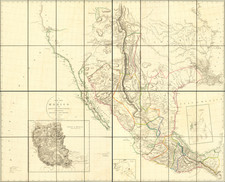Remarkable image showing Choctaw Indians playing lacrosse, from George Catlin's North American Indian Portfolio.
In 1834, George Catlin witnessed Choctaw lacrosse in Indian Territory near present-day Oklahoma, and was captivated by the game. Ball-play was at the core of an elaborate ceremony that brought recognition and status to individuals within the tribe. Before the match, players and their supporters passed the night in singing, dancing, and soliciting divine support. Catlin sketched this image of a ball-play dance in 1834 near Fort Gibson, an outpost up the Arkansas River. Catlin later wrote:
Night came on without the appearance of any players on the ground. But soon after dark, a procession of lighted flambeaux was seen coming from each encampment, to the ground where the players assembled . . . and at the beat of the drums and chaunts of the women, each party of players commenced the 'ball-play dance.' Each party danced for a quarter of an hour . . . and all their voices joined in chaunts to the Great Spirit; in which they were soliciting his favour in deciding the game to their advantage.
(Catlin, Letters and Notes, vol. 2, no. 49, 1841, reprint 1973; Gurney and Heyman, eds., George Catlin and His Indian Gallery, 2002)
In 1827, George Catlin, an illustrator from Philadelphia, became the first artist to ascend the Missouri River, and the first to create visual records of his experiences traveling among the Plains Indians of North America. Catlin embarked upon his most famous journey in the Spring of 1832, traveling from St. Louis up the Missouri on the steamboat Yellowstone to Fort Union, at the intersection of the Yellowstone and Missouri rivers. It was a path that Karl Bodmer was also to follow just a year later, leading along a series of trading posts that served as a conduit for the furs and pelts brought down from the Rocky Mountains and channeled east.
Catlin's North American Indian Portfolio is one of the most important accounts of Native American life. In the preface, Catlin describes how the sight of several tribal chiefs in Philadelphia led to his resolution to record their way of life: "the history and customs of such a people, preserved by pictorial illustrations, are themes worthy of the lifetime of one man, and nothing short of the loss of my life shall prevent me from visiting their country and becoming their historian". He saw no future for either their way of life or their very existence, and with these thoughts always at the back of his mind he worked, against time, setting himself a truly punishing schedule, to record what he saw. From 1832 to 1837 he spent the summer months sketching the tribes and then finished his pictures in oils during the winter. The record he left is unique, both in its breadth and also in the sympathetic understanding that his images constantly demonstrate. A selection of the greatest of images from this record were published in the North American Indian Portfolio in an effort to reach as wide an audience as possible.
The present example is from the London edition of Catlin's seminal work. First issued in London in 1844, Catlin's work is one of the great 19th Century illustrated works and a seminal piece for Americana collectors.









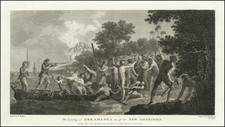
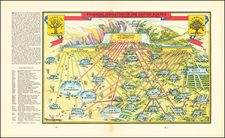
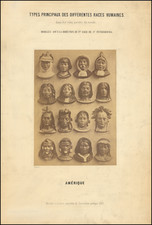
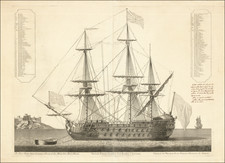
![(World War II) [Iwo Jima Aerial Reconnaissance Photograph, March 8, 1945]](https://storage.googleapis.com/raremaps/img/small/83776.jpg)
